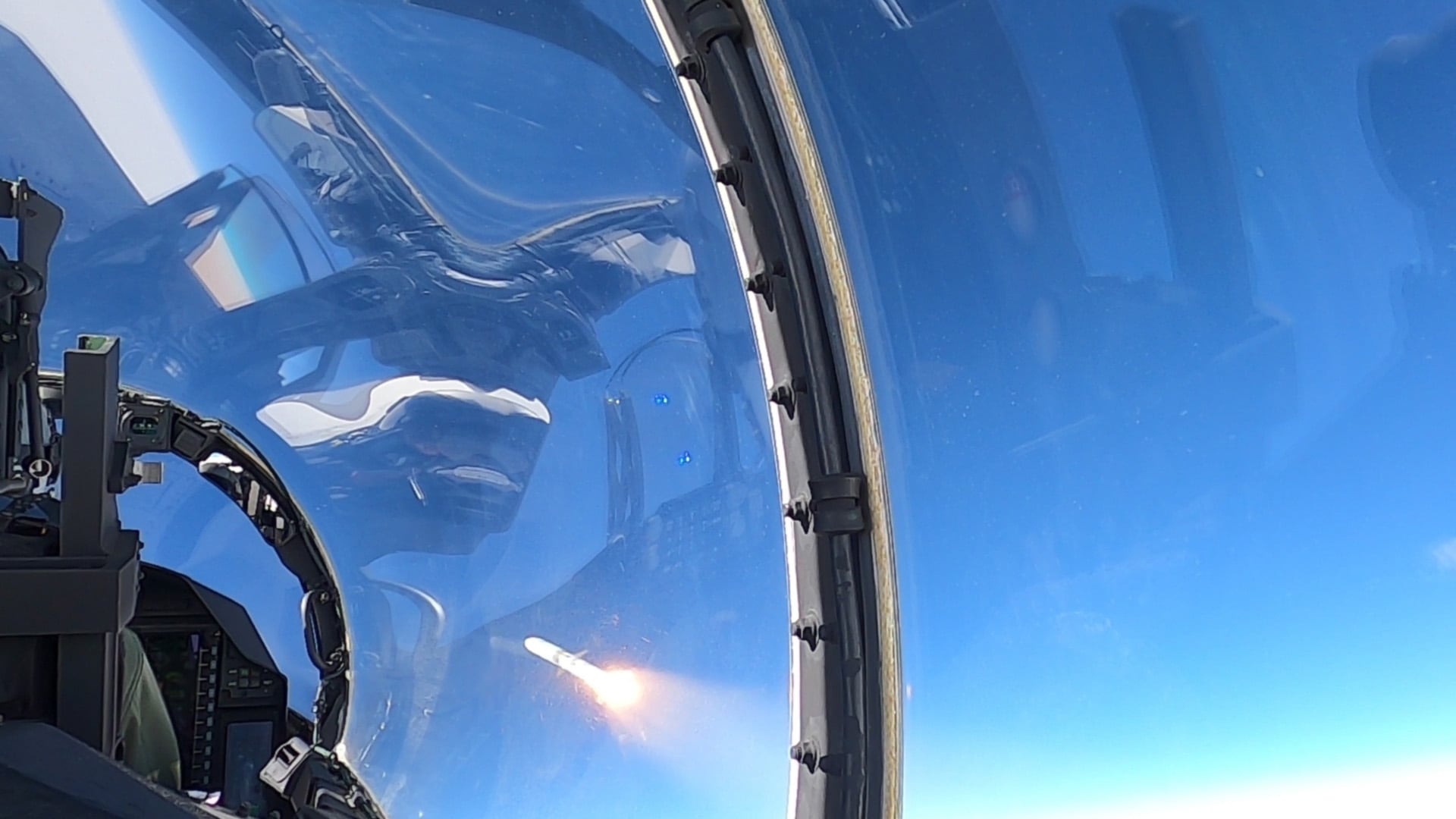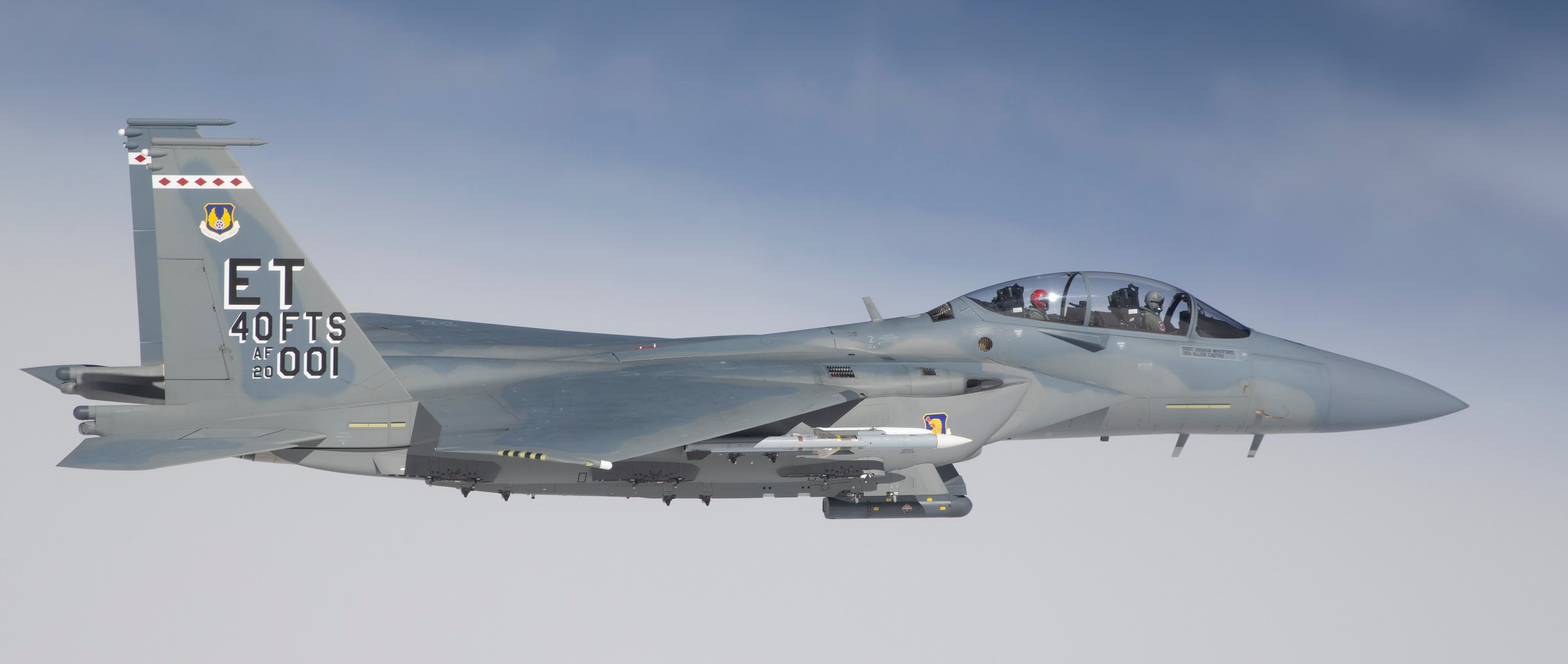WASHINGTON — The F-15EX Eagle II — the latest version of the Air Force’s fourth-generation fighter — fired a weapon for the first time last week.
The fighter, part of the 40th Flight Test Squadron and flown by experimental test pilots Maj. Benjamin Naumann and Maj. Mark Smith, on Jan. 25 successfully fired an AIM-120D missile at a BQM-167 target drone over the Gulf of Mexico, the Air Force said in a release Monday.
The F-15EX, which was taking part in an air-to-air weapons system evaluation program known as Combat Archer, found the drone with its sensors, tracked it and fired the missile at it, the release said. The Air Force tracked the missile on its way to the drone, decided the test had been successful and cut the missile’s flight short.
“This was an end-to-end verification of the entire weapons system, which will pave the way for more complex missile shots in the future,” Colton Myers, the F-15EX test project manager with the operational flight program combined test force, said in the release.

The Air Force said the successful missile release followed six months of integrated developmental and operational flight testing.
It was also Naumann’s first missile shot. The Combat Archer evaluation program often gives pilots the opportunity for their first live fire, the Air Force said.
Naumann said verifying the F-15EX is capable of live-firing missiles “is another step towards fielding the aircraft to combat units.”
The first two F-15EXs, tail numbers 001 and 002, arrived at Eglin Air Force Base in Florida last March and April, and since then have taken part in a series of tests and evaluations. Last May, the fighters deployed to Alaska for the Northern Edge joint training exercise, where the Air Force studied how well it can perform when its GPS, radar and other systems face jamming threats.
These survivability tests helped the Air Force find and fix problems with the fighter’s Suite 9 software system, the Air Force said.
And in October, the F-15EXs took part in a weeklong operational test at Nellis Air Force Base in Nevada, where they flew alongside F-15Cs and Es and tested its Eagle Passive/Active Warning and Survivability System, or EPAWSS, electronic warfare system.
Myers said in the release the October exercise showed the F-15EX “still needs more development,” but that the fighter is capable of taking on its air dominance role.
Stephen Losey is the air warfare reporter for Defense News. He previously covered leadership and personnel issues at Air Force Times, and the Pentagon, special operations and air warfare at Military.com. He has traveled to the Middle East to cover U.S. Air Force operations.





